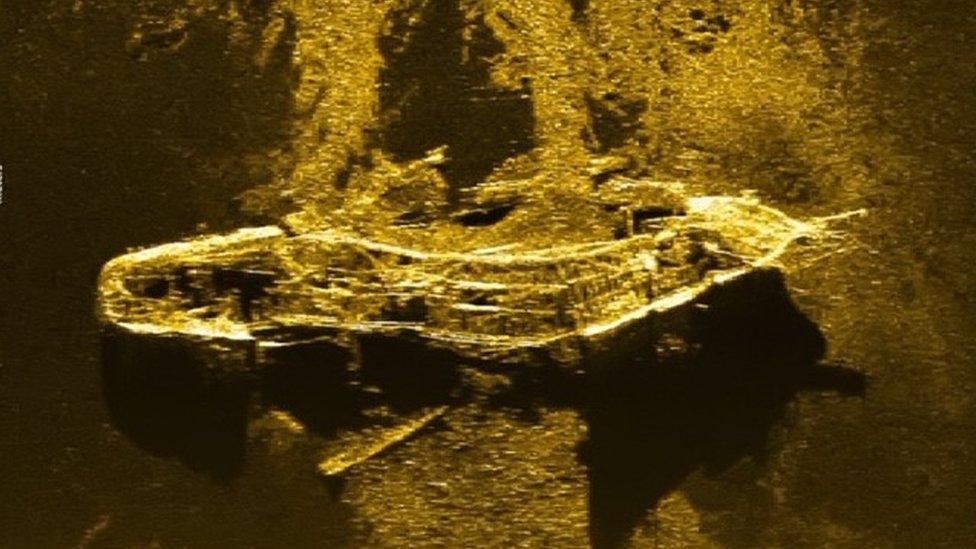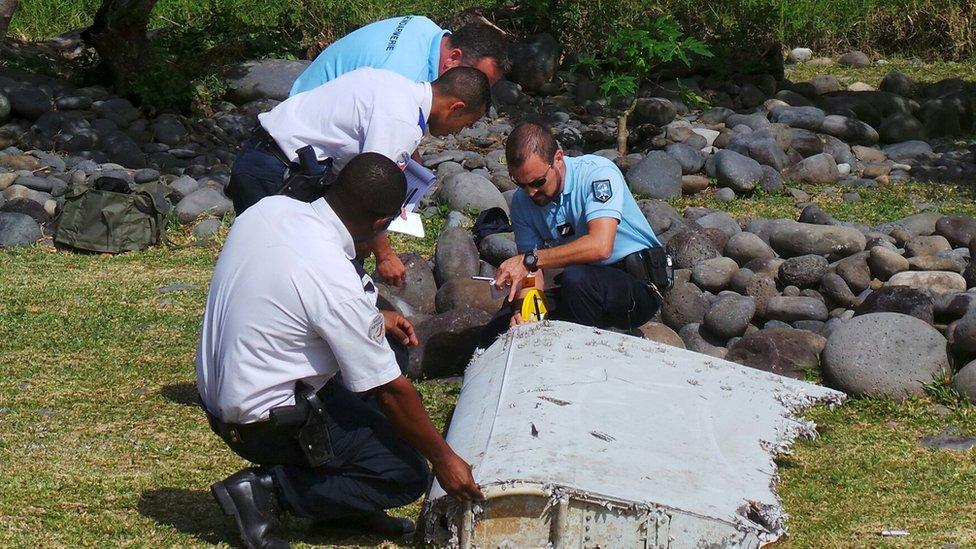MH370 search team finds second shipwreck
- Published

Search teams looking for the missing Malaysia Airlines MH370 think they have stumbled across a 19th-Century shipwreck.
Underwater sonar equipment turned up a strange object more than two miles beneath the waves just before Christmas.
Earlier this month they sent down an unmanned submarine to take a picture.
Experts at the Western Australian Museum think it is a 19th-century ship made of metal.
This is the second uncharted shipwreck found miles beneath the waves during the search for the missing plane.
Last year, investigators released ghostly images of man-made debris scattered along the sea floor, including what is clearly an old anchor.
The hunt for MH370 no longer makes headlines, but what some have described as the most complex search in history has continued for almost two years.
Three ships are methodically combing the belly of the southern Indian Ocean. Before this search, scientists knew more about the surface of the moon than the bottom of this stretch of water, so it is not surprising that they keep revealing secrets.
Along with the shipwrecks, a number of previously unknown underwater volcanoes have been discovered.
The search teams have now checked two thirds of the 120,000 sq km search zone.
Wing find
That is an area not much smaller than Greece, so mountainous that it dwarfs the Alps, with weather as hostile as any on earth. Because conditions are so dangerous, the three ships involved travel at walking pace.

The search will conclude later this year and after that the authorities have admitted they will give up unless some debris is found.
They are confident they are looking in the right place after a piece of a wing from MH370 was washed up on an Indian Ocean island thousands of miles away.
Oceanographers have modelled the way the sea would have moved the fragment, and how long it would have taken to reach Reunion island.
They say it all points to the aircraft coming down where they are currently looking, although no-one has any idea why it ended up so far off course.
The plane had 239 people on board and was en route from Kuala Lumpur to Beijing on 8 March 2014 when air traffic controllers lost contact with it.
Last year Malaysia Airlines appointed Aer Lingus boss Christoph Mueller as chief executive in a bid to revive the ailing company.
In June the airline announced plans to axe 6,000 jobs from its 20,000-strong workforce and abandon unprofitable routes to stem substantial losses.
- Published17 January 2017
